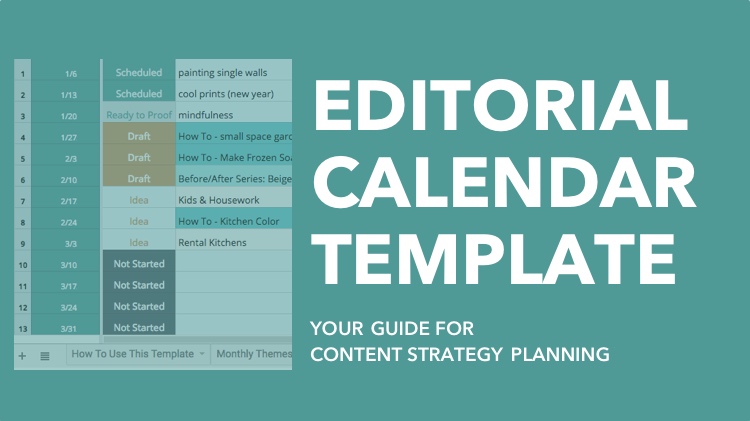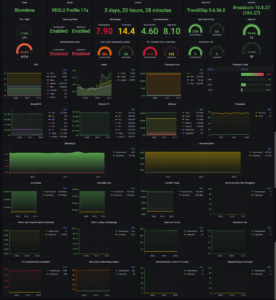Introduction to the importance of an editorial calendar
Every successful blog has one thing in common: a well-organized content strategy. Enter the blog editorial calendar template, your secret weapon for creating engaging and consistent content. Imagine having all your ideas, deadlines, and publishing schedules neatly laid out before you. It’s like having a roadmap that guides you through the sometimes chaotic journey of blogging.
An editorial calendar not only helps streamline your workflow but also keeps your creative juices flowing. You’ll never have to stare blankly at a screen wondering what to write next again. Instead, with an effective plan in place, you’ll find yourself producing high-quality posts that resonate with your audience and drive traffic to your site.
Whether you’re a seasoned blogger or just starting out, embracing this tool can transform how you approach content creation. Let’s dive into why an editorial calendar is essential for any blogger looking to take their game to the next level!
Benefits of using a blog editorial calendar
Using a blog editorial calendar transforms your content creation process. It provides structure and clarity, allowing you to visualize upcoming topics and deadlines.
With an organized approach, you can maintain consistency in posting. Regular updates keep your audience engaged and eager for new material.
An editorial calendar also helps streamline collaboration if you’re working with a team. Everyone stays informed about their responsibilities and timelines, reducing confusion.
Additionally, planning ahead allows you to align content with seasonal events or trending topics. This relevance can enhance your blog’s visibility in search engines.
It offers valuable insights into how often you’re covering different themes. Understanding this balance is key to catering to your audience’s interests effectively.
How to create a blog editorial calendar
Creating a blog editorial calendar starts with identifying your goals. What do you want to achieve? Increased traffic, better engagement, or consistent posting? Define these objectives clearly.
Next, brainstorm content ideas that align with your goals and resonate with your target audience. Use tools like keyword research and social media trends to fuel this process.
Once you have a list of topics, decide on the frequency of your posts. Will it be weekly, bi-weekly, or monthly? This choice will shape your entire calendar.
Choose a format for your calendar—whether it’s a spreadsheet, an app, or a physical planner. Make sure it’s user-friendly and accessible so you can update it easily.
Assign deadlines and specific publishing dates for each piece of content. Regularly review and adjust as needed to stay on track while being flexible enough to incorporate new ideas along the way.
Tips for effective content planning and scheduling
Effective content planning is all about flexibility. While a schedule is important, allow room for spontaneity. Sometimes, trending topics arise that deserve immediate attention.
Use a mix of evergreen and timely content. Evergreen posts provide consistent traffic, while timely pieces engage audiences with relevant issues. Balance both types in your calendar for maximum impact.
Don’t forget to consider your audience’s preferences. Analyze their behavior through analytics tools to determine the best posting times and formats they prefer.
Incorporate themes or series into your planning. This creates anticipation among readers and helps you dive deeper into specific subjects over time.
Remember to review and adjust regularly. What worked last month may not resonate today, so be willing to adapt based on feedback or changing trends in your niche.
Examples of successful blogs using editorial calendars
Many successful blogs attribute their growth to the use of an editorial calendar. For instance, HubSpot effectively organizes its content by planning topics aligned with marketing trends and audience needs.
Another great example is Buffer. They utilize a well-structured editorial calendar to ensure consistency in posting across multiple platforms while maintaining quality engagement with their followers.
The Simple Dollar has also embraced this tool. By scheduling personal finance articles ahead of time, they can stay relevant during key financial seasons like tax season or back-to-school shopping months.
Food blogs like Minimalist Baker benefit from strategic planning too. Their editorial calendar allows them to align recipes with seasonal ingredients and holidays, keeping their audience excited throughout the year.
These examples highlight how effective organization can lead to consistent and engaging content that resonates with readers while boosting overall traffic.
Common challenges and how to overcome them when using an editorial calendar
Using a blog editorial calendar can be transformative, but it comes with its share of challenges. One common issue is the tendency to over-plan and become inflexible. This rigidity can stifle creativity and lead to burnout.
To combat this, allow room for spontaneous content ideas. Set aside “buffer” days in your schedule where you can explore trending topics or personal insights that may arise unexpectedly.
Another frequent challenge is keeping up with deadlines. Life happens, and sometimes priorities shift.
Implementing reminders or using project management tools can help keep you on track without feeling overwhelmed.
Additionally, collaboration among team members might face hurdles if communication isn’t clear. Regular check-ins ensure everyone stays aligned and accountable while fostering a more cohesive creative environment.
By addressing these obstacles proactively, you’ll find that an editorial calendar empowers rather than restricts your blogging journey.
Conclusion: The power of organized and planned content creation for a successful blog
An organized approach to content creation can transform your blogging experience. By utilizing a blog editorial calendar template, you set the stage for consistent and engaging posts that resonate with your audience.
With a well-structured calendar, you’ll find it easier to brainstorm ideas, schedule posts around important dates, and ensure a diverse range of topics. Planning ahead alleviates stress and gives you room to focus on quality writing rather than rushing at the last minute.
Moreover, tracking deadlines helps maintain accountability. This way, you’ll build momentum that not only enhances your productivity but also fosters growth in readership. Successful blogs often share one common trait: their creators embrace planning as an essential part of their strategy.
As challenges arise—be it writer’s block or unexpected life events—having an editorial calendar acts like a safety net. It keeps you grounded while allowing flexibility when necessary.
Embracing this tool leads to smarter work habits and ultimately paves the way for success in the ever-evolving world of blogging. The journey may be filled with twists and turns, but with organized planning at your side, you’re equipped to navigate any challenge effectively.




